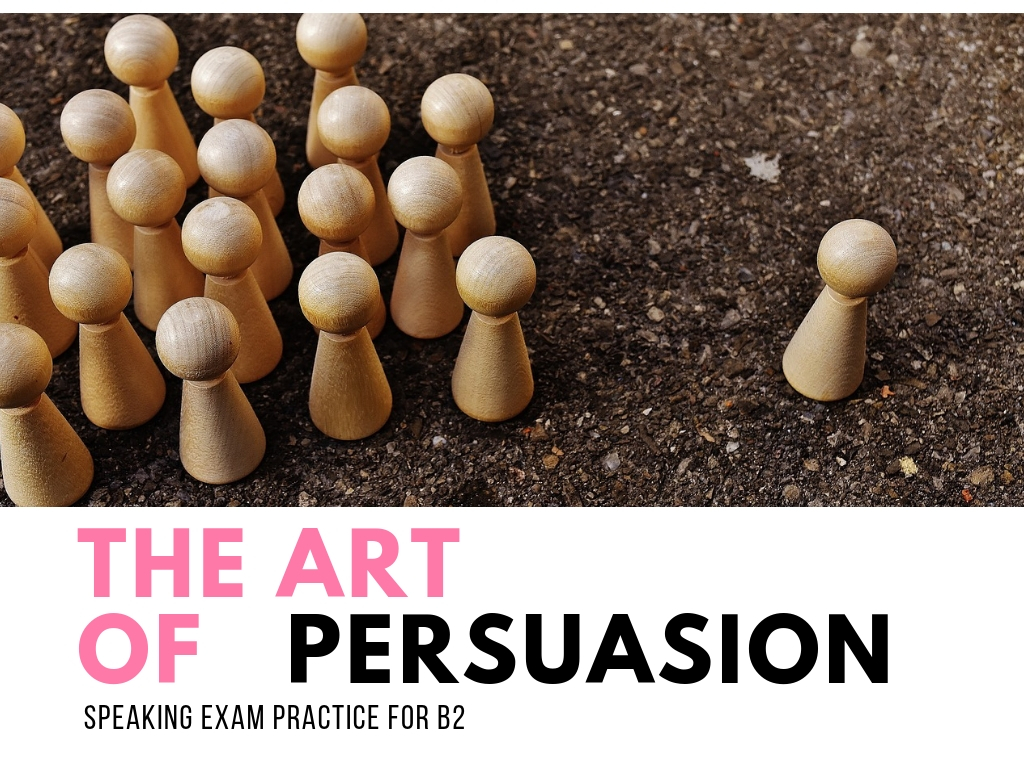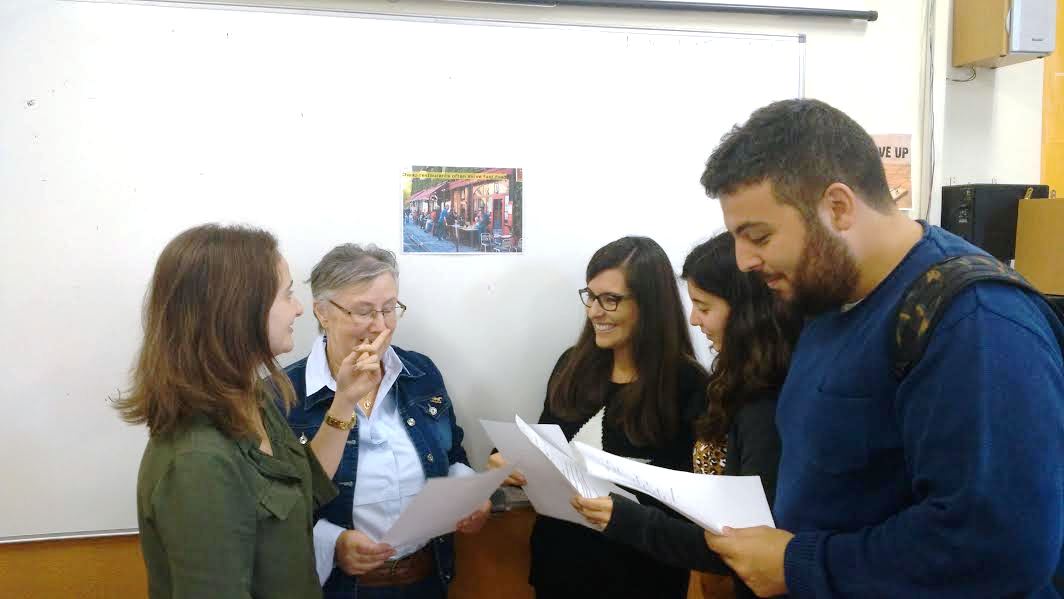My friends say about me that I am very easily convinced. I am easy, that’s what they say. I guess they know it’s easy to seduce me into doing things that I like, but I reckon they know that it’s not so easy to talk me into doing something I don’t really want to do. So, I let them think it’s a piece of cake to win me over. They are happy and so am I. It’s also very true that once I make up my mind, it’s hard to talk me out of doing it and that I am not easily put off by setbacks. For better or for worse, that’s the kind of girl I am. Easy to persuade but hard to dissuade.

1. Working with vocabulary.
In the introduction to the post above, I have highlighted some verbs. Can you tell me which ones are used for persuasion and which ones for dissuasion?
Now, do this exercise to consolidate learning
2. Warming-up. Speaking
Choose the statements you agree with:
- I am good at persuading people
- You talk to me enough, you can convince me to do anything
- I will never lie or exaggerate to persuade someone
- My parents or my friends just keep on talking and eventually I agree with them
3. Working with Functional Language
The list you’ll find below is not intended to be a comprehensive list of all the language you can use in this context, it’s just a selection of some of the functional language I want my students to use in this speaking activity.
Before you start the role play, make sure students are confident with the language they’ll have to use.
Expressions used to make suggestions:
- Might I suggest…?
- Shall I/we…?
- Why don’t you/we….?
- I suggest that you… / I suggest+…ing
- We should….
Expressions used to offer alternatives
- Instead of … ing
- Wouldn’t you prefer to….?
Expressions used for reassuring
- You don’t have to worry about…
- I can assure you that…
- I guarantee you won’t (regret it)
Expressions used for dissuading
- I wouldn’t bother about that.
- I (would strongly) advise (you) against …ing
4. Speaking task
Holiday in Scotland. Explain that they are planning a week’s holiday in Scotland with a friend but they don’t seem to agree on the kind of holiday to book. They will need to discuss the options and try to come to an agreement.
Students work in pairs to develop the role-play based on the information given to them on their corresponding handout. If there are three students in the group, the third one could be the travel agent.
Tell students they will need to talk for about 5 minutes and try to reach an agreement at the end of the conversation.
Student A
Bed and Breakfast and drive: you are planning a week’s holiday in Scotland with a friend. You think the best idea is to hire a car and drive, staying at bed and breakfasts/guests houses.

Student B
Package holiday in Scotland: you are planning a week’s holiday in Scotland with a friend. You think the best idea is to go on a package holiday, staying at hotels and going on organized excursions to the most famous places.

Credit: This speaking task has been inspired by a task published by Conselleria D’Educació- Generalitat Valenciana.

